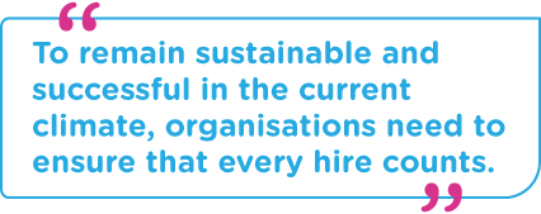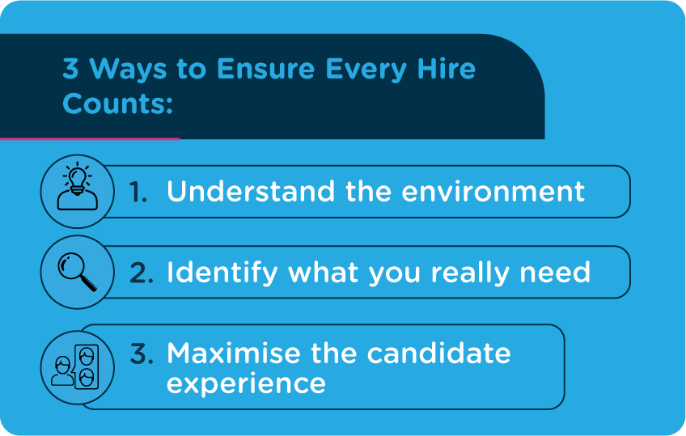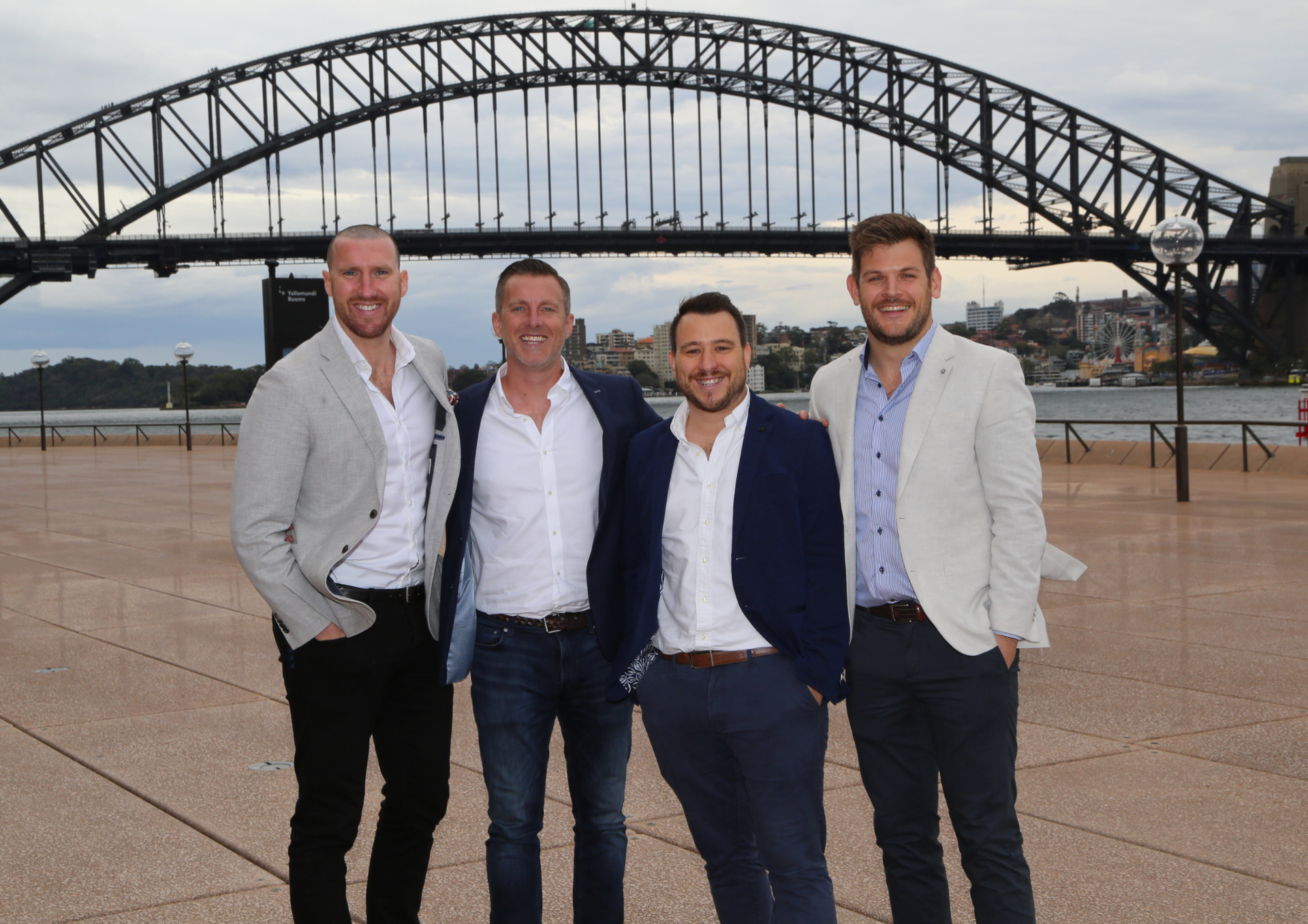How to Make Every Hire Count
Even under normal circumstances, the cost of making a bad hire is considerable. But when the market is shifting, the future is uncertain and budgets are tight, the stakes are even higher.

To remain sustainable and successful in the current climate, organisations need to ensure that every hire counts by establishing a hiring strategy that is focused equally on the present and future. While the talent pool may have grown within some verticals, the most qualified Digital & Technology candidates are still in high-demand, and forward-thinking companies should take a tactical approach if they want to make the most of their human capital investment and secure these exceptional people.
In light of this, we recommend the following steps to ensure that your organisation is positioned to hire top talent:

1. Understand the Environment
Today’s market is very different from the one that came before, and an important part of how to hire the best Digital & Technology candidates is to understand the variables of this environment. For example, the rising adoption of remote work means that there may be more candidates to choose from, but you will likely also need to be more selective.
When looking to hire, consider what impact the external and internal environment may have. What are the market conditions that the new hire will be facing? How quickly are they changing? Does the candidate have experience dealing with these conditions? How adaptable are they? How quickly do they learn? How is the organisation measuring up to its past performance and competitors? What changes do you anticipate for the future?
By evaluating the relationship between the role, the organisation and the external context and creating a flexible recruitment plan, you scale as you need to and ultimately make better hiring decisions.
2. Identify What You Really Need
To make every hire count, organisations need a clear picture of what they’re looking for in a candidate, as well as how positions may shift going forward. Before commencing the hiring process, work with your recruitment partner to define what you’re looking for in your perfect candidate, considering not just technical expertise and experience, but also soft skills and cultural fit.
For existing roles within your company, a good place to start is to think of someone who did an excellent job in that position in the past. What characteristics, behaviours and skills did they demonstrate? This will help you determine the competencies that make for outstanding performance in that role.
Keep in mind that there is often a significant difference between current requirements and what the organisation will need later on. As such, part of the search should be for individuals who are adaptable, autonomous and innovative. The aim should be to identify people who can adjust to fit multiple roles as new challenges arise, meaning they will continue to add long-term value.
3. Maximise the Candidate Experience
Regardless of how the market has changed, the candidate experience will always feature in top recruitment advice. From the initial application to accepting a job offer, every interaction that occurs during the recruitment process impacts the candidate experience. Make a poor impression and you could miss out on the best people. Organisations that recognise the importance of the jobseeker’s journey when designing the recruitment strategies and clearly communicate these processes to job applicants will have a better chance of making effectual hires.
When looking to improve the candidate experience, consider the following areas:
- The accuracy of job descriptions
- The ease of the application process
- The quality and frequency of communication to candidates
- The complexity of the interview process
- The delivery of rejections and jobs offers
- The flexibility of offer negotiations
- The thoroughness of onboarding
Of course, your chances of delivering a strong candidate experience are greatly enhanced by utilising a specialist recruitment agency who will oversee the process and serve as the middleman between your organisation and promising applicants.
Additionally, don’t forget to keep all messaging consistent, whether it’s internal, on social media or in job ads. Maintaining a coherent tone around your organisation’s culture and values will go a long way towards attracting the right people.
Closing Thoughts
While these strategies will provide a significant advantage when hiring in the current climate, they are also valuable recruitment best practices to maintain in normal times. By ensuring you get maximum impact from every hire you make, you can build a streamlined and effective workforce that will serve your organisation well for the long run.
Want to get more from your next hire? We can help. Speak to the IT recruitment specialists at Talenza to learn how we can partner with you to secure the highest quality talent available in the Sydney and Brisbane markets.


Recruitment International Awards’ The Rising Star’ award winner 2018, 2019 & 2020 & Best Large Recruitment Agency 2021

The Global Recruiter Asia Pacific Awards Best Newcomer Award Winner 2019

Quicklinks
Disciplines
Get in Touch
Sydney: Level 7/10 Spring St, Sydney NSW 2000
Brisbane: 40 Creek Street, Brisbane City QLD 4000
Melbourne: Level 7, 222 Exhibition Street, Melbourne VIC 3000
© Talenza Pty Limited. All rights are reserved.




